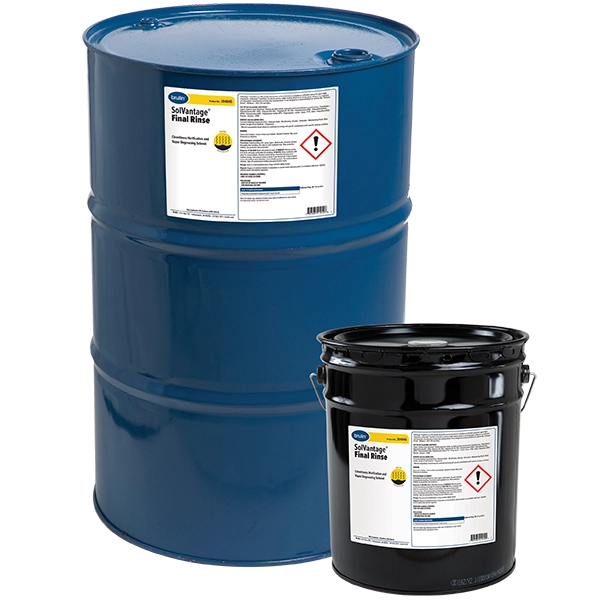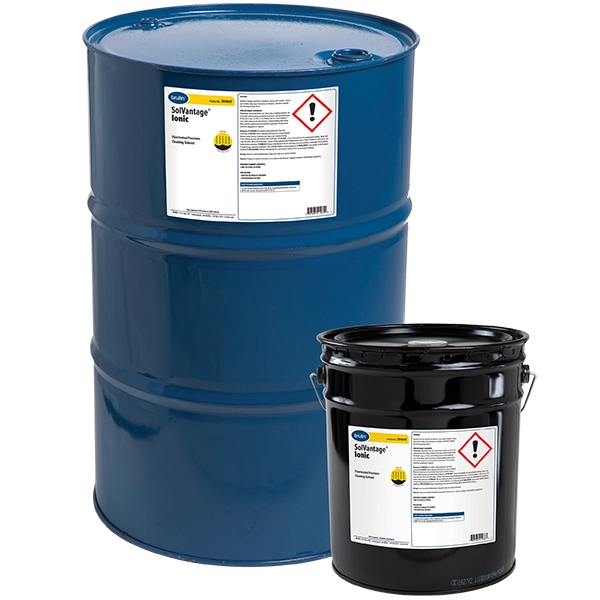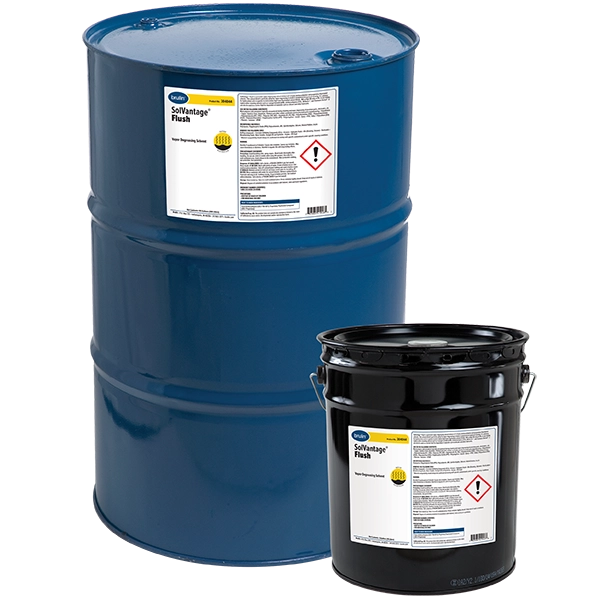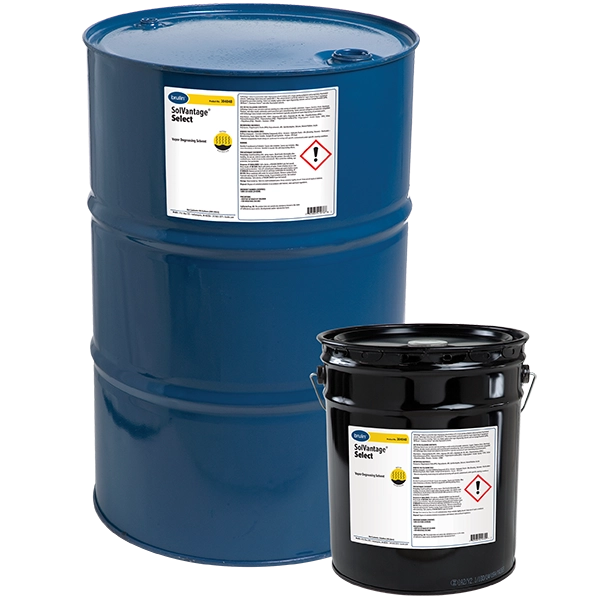Cleaning process managers who depend on 3M Novec™ solvents continue to be hampered by supply chain issues. But their workload has not changed—or, if anything, their workload has increased.
There’s no need to panic: Brulin stands ready with direct drop-in replacement solvents with guaranteed availability if you find yourself in this position.
SolVantage® Final Rinse
Drop-In Replacement For 3M Novec™ 7100
Thanks to its broad material compatibility across many light-duty industrial applications, Novec™ 7100
is one of the most used 3M formulations. It’s best for light oils, particulates, and fluorocarbon greases and lubes, and also can be used as a rinsing agent.
If you use this solvent and can’t source it from your supplier, consider using Brulin’s
SolVantage® Final Rinse instead. In addition to being the ideal substitute for Novec™ 7100, it can also be used as a replacement for Chemours Vertrel®, HCFC-225, and others.
Like Novec™ 7100, Final Rinse is a VOC-exempt solvent that is non-flammable, not a hazardous air pollutant, and has zero ozone depletion potential. While most of our clients use it as a cleaning solvent or rising agent, it also can be used as a co-solvent in heavy-duty cleaning blends to improve performance.
Proven Performance
Final Rinse conforms to a wide variety of industry standards, including ASTM F 945-12, ASTM F 519, ASTM F2111-01A, and ARP 1755. It can also be used in space applications for cleanliness verification. Final Rinse will remove organics and particulate to ensure customers are able to meet their cleanliness requirements in accordance to IEST 1246.
SolVantage® Ionic
Drop-In Replacement For 3M Novec™ 72DA
Cleaning process managers turn to 3M Novec™ 72DA in vapor degreasing to replace n-propyl bromide (nPB) and trichloroethylene (TCE)-based solvents, both of which have been
deemed an unreasonable risk to workers by the EPA due to their toxic properties.
Novec™ 72DA is both non-flammable and low toxicity, making it much safer to work with than nPB or TCE. However, 72DA is one of the solvents that have experienced availability issues, which makes it hard to find.
A mixture of 1,2 trans-dichloroethylene, proprietary fluorinated solvents, and isopropyl alcohol, Brulin’s
SolVantage® Ionic is a perfect replacement. It’s the ideal chemistry for modern vapor degreasing and removing polar and non-polar soils. True to its name, Ionic removes ionic contamination from a variety of electronic applications as well as water-soluble oil residues.
SolVantage® Ionic is US EPA SNAP approved, is not a Hazardous Air Pollutant (HAP), and is not regulated under NESHAP.
SolVantage® Flush
Drop-In Replacement For 3M Novec™ 73DE
Shops select Novec™ 73DE for vapor degreasing where there are heavy greases, oils, waxes, silicones, and non-polar residues to remove. Its chemical composition remains stable even after extended use, and it offers better results, requires less energy use, and works faster than comparable aqueous cleaners.
If you need a replacement for 73DE, we recommend considering Brulin’s
SolVantage® Flush. Our newest 1,2 trans blend vapor degreasing solvent, Flush is ideally suited for vapor degreasing in modern equipment and general cleaning.
Compared to most high-trans fluorinated solvent blends, Flush offers excellent solvency for hydrocarbon soils when compared to most similar high-trans fluorinated solvent blends. A Kb value of 94 allows it to work as a replacement not only for 73DE but nPB, TCE, and Chemours Vertrel®, as well as a carrier fluid for lubricant deposition.
SolVantage® Select
Drop-In Replacement For 3M Novec™ 72DE
For more heavy-duty vapor degreasing processes, parts cleaners that use 3M products will often opt for Novec™ 72DE. Its high solvency and low toxicity make it a perfect replacement for ozone-depleting compounds, chlorinated solvents, and nPB.
We recommend that process managers consider Brulin’s
SolVantage® Select as a replacement for 72DE. A mixture of 1,2 trans-dichloroethylene and proprietary fluorinated solvents, Select’s low toxicity makes it safer to use than many traditional alternatives.
SolVantage® Select is non-corrosive and non-staining to a wide variety of metallic substrates, including Copper, Stainless Steel, Aluminum, Titanium, and other metals commonly used in precision parts manufacturing. It removes buffing compounds, corrosion inhibiting compounds (CICs), greases, hydraulic fluids, oils (drawing, silicone), particulate, metalworking fluids (straight oil and synthetic), krytox, and FPI fluid.
Switching To Drop-In Replacements Is Easy
Switching solvent manufacturers can be an intimidating process. However, Brulin’s long history of producing market-leading and innovative chemistries uniquely positions us as a proper, seamless drop-in replacement for 3M solvents affected by supply chain issues.
Our SolVantage® line, including Final Rinse, Ionic, Select, and Flush, are all fully stocked and ready to ship from our partners. And you can lean on our expertise as you transition from 3M Novec™ to Brulin SolVantage®, ensuring your operation doesn’t miss a beat.
No matter the cleaning need, Brulin has the right chemistry to meet your operational objectives.
Contact us today to learn more.



